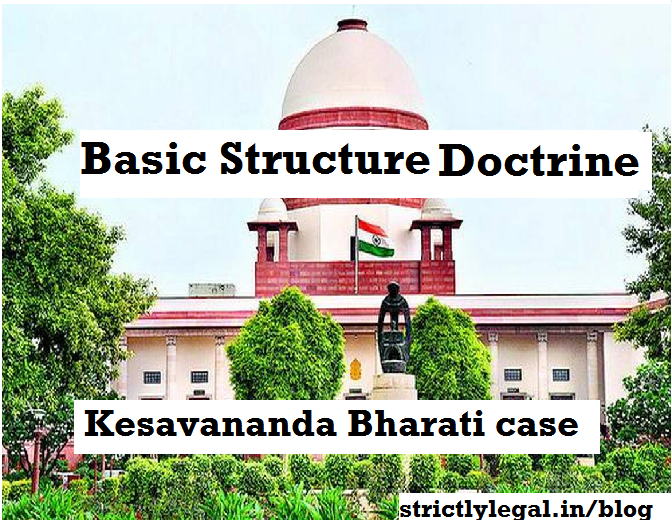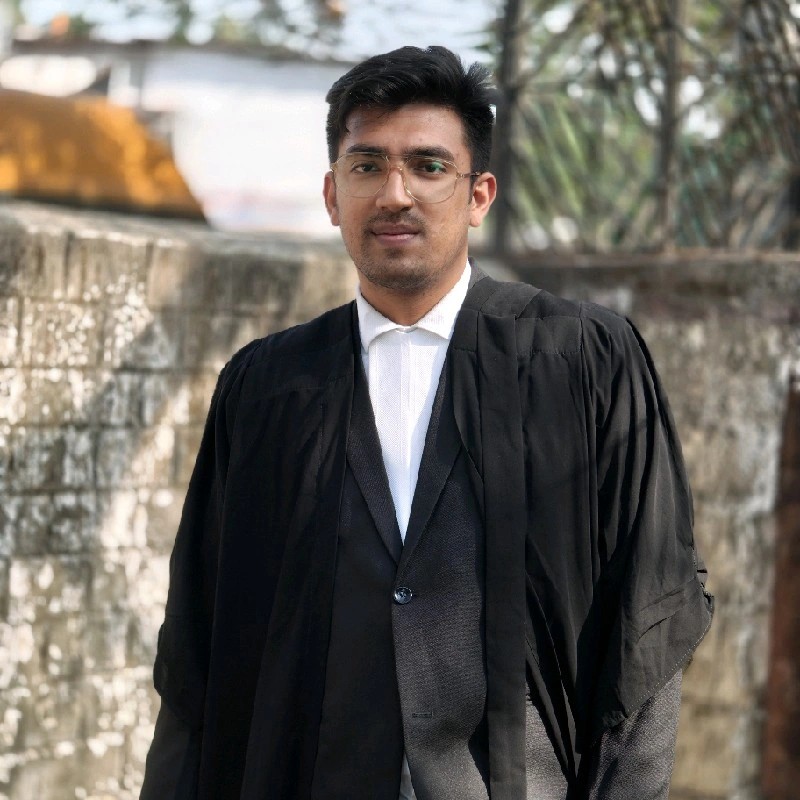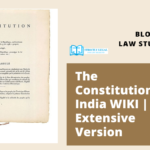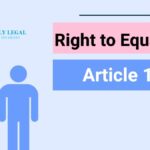In this article, we will discuss the basic structure doctrine of the Constitution of India.
Table of Contents
What does Basic Structure Doctrine mean?
In our previous blog Constitutional Amendments, we have learned that the parliament has powers to amend the Constitution if it so requires. But this power is not unleashed.
The Indian Judiciary in Keshvanand Bharati Case came up with the Basic Structure Doctrine stating that any amendment that is done in a view that takes away the basic framework within which the Constitution of India is embedded shall be void. That is what essentially What the basic structure means.
It is also a matter for consideration whether making a change in a basic feature of the Constitution can be regarded merely as an amendment or would it be, in effect, rewriting a part of the Constitution; and if the latter, would it be within the purview of Article 368 ?
Kesavananda Bharati … vs State Of Kerala And Anr
We shall discuss further about these in details on this blog.
Basic Structure Doctrine and Kesavananda Bharati Case
Kesavanand Bharati, Head of the Edneer mutt in Kerala, was a petitioner in the historic Supreme Court case Kesavanand Bharati V State of Kerala (1973) which Introduced Basic Structure Doctrine of the Constitution.
This case was heard at the Supreme Court of India for 68 days by Chief Justice Sikri and the other 12 judges. The judgment of this case was very detailed and contained over a thousand citations and the then Attorney-general made a chart for comparative analysis of the provisions of the Constitutions of over 70 countries.
All this effort was to answer one simple question: Does the Indian Parliament has an unleashed power of control over amending the Constitution?
In the exact words: What is the extent of the amending power conferred by Article 368 of the Constitution, apart from Article 13(2), on Parliament ?
This is one of the most symbolic cases in Indian Constitutional history and is often referred to as the case that saved the Indian Democracy.
A 13–judge Constitutional bench by 7-6 verdict ruled that the Constitution has a basic Structure and that Parliament Lacked the power to destroy or amend it.
When we speak of the Basic Structure, we don’t speak of the Articles of the Constitution or its provisions, but the principles which they enshrine.
Article 368 does not contain any limitations to the extent the parliament can amend the constitution. Therefore, if this question is left out for the parliament to decide, India would no longer be the free country that the framers of the constitution wanted.
So, What did the court decide?
The 703-page judgment revealed that the parliament could amend the Constitution as long as the amenments does not take away or abridges the basic structure or the fundamentals to the Constituion.
It did not specifically provide for an exhaustive list and kept it open for the court to decide as and when needed.
It may be said that the Basic Structure consists of the principles keeping which in mind, the Constitution was framed. As for example, Objectives specified in the Preamble, Right to Equality, Right to Life and Personal Liberty, Right to Freedom of speech and expression, Separation of Powers, etc.
Evolution of Basic Structure
The genesis or the basic structure doctrine evolution began with the dispute leading to Kesavanand Bharati’s case lied in the Interpretation of Article 368 of the Indian Constitution, which allows parliament to amend the Constitution. The scope and extent of Parliamentary power to modify the constitution was a highly contented Issue.
1951 : Shankari Prasad Case
In the Shankari Prasad Case validity of 1st Constitutional amendment act 1951, which Inter-alia inserted article 31-A and 31-B was challenged. The amendment was challenged on the ground that it abridges the rights conferred by part III and hence was void. The Supreme Court of India ruled that under Article 368 the Parliament shall have the powers to amend the constitution and such powers shall include the power to amend the fundamental rights as has been laid down under part III of the constitution.
1965: Sajjan Singh case
In this case the Supreme Court of India reiterated that the parliament can amend any part of the constitution including the fundamental rights. Two dissenting judges also remarked that in such a case, fundament rights could be a plaything of the political party in power.
1967: Golaknath case
In this case the bench reversed the earlier judgements ruling that the fundamental rights as has been guaranteed by the constitution of India cannot be amended under normal procedure. And that a constituent assembly would be required to form to amend the part III of the Constitution. To be specific, Subba Rao, C.J., Shah, Sikri, Shelat and Vaidialingam, JJ. (Hidayatullah, J. Concurring)contented that the Fundamental Rights cannot be abridged or taken away by the amending procedure in Article 368 of the Constitution.
“The importance attached to the fundamental freedoms is so transcendatal that a bill enacted by a unanimous vote of all the members of both Houses is ineffective to derogate from its guaranteed exercise.”
1973: Kesavananda Bharati case
This was the case where the term basic structure doctrine was coined. The court rules that no part of the constitution is outside the scope of parliament. Even the fundamental rights can be amended however the basic framework of the constitution cannot be altered. The SC went ahead to opine that the parliament may have the power to amend the constitution but not to rewrite it. “The power to amend is not a power to destroy.”
This judgement gives the very basis by which the judiciary can strike down any amendment of the constitution stating that it violates the basic structure.
How did the Parliament react?
As soon as Golak Nath Case was pronounced many criticized that it interfered with the power of parliament to amend the constitution. In order to remove difficulties created by the decision of the Supreme Court of India in the Golak Nath case parliament enacted the 24th Amendment Act, 1971 introducing Clause (4) in Article 13. Clauses (1) and (3) were also added to Article 368, both to restrict the scope of Article 13.
Along with that the 25th amendment Act, 1971 modified article 31 of the constitution, expanding the power of the Government to acquire private property.
These were challenged before Supreme Court Setting the stage for a constitutional battle which was not only landmark in constitutional law but a turning point in constitutional history.
Why did Keshavnanda Bharati have to go to Court?
A Hindu Seer Kesavananda Bharati Sripadgalvaru (now deceased) whose fight to protect his temple against encroachment by the state government along with 24th and 25th Amendments challenged the constitutionality of 29th Amendment Act, 1972, which places the Kerala Land Reforms Act, 1963 into the Ninth Schedule and for a matter of fact 9th Schedule is called the island of the constitution which saves the laws from judicial invalidation.
He prayed that the provisions of the Kerala Land Reforms Act, 1963 (Act 1 of 1964) as amended by the Kerala Land Reforms (Amendment) Act 1969 (Act 35 of 1969) be declared unConstitutional, ultra vires and void. He further prayed for an appropriate writ or order to issue during the pendency of the petition.
What did the Supreme Court Deliver in the Verdict?
The court by majority overruled the Golak Nath case which denied parliament the power to amend fundamental rights of the citizens. The majority held that article 368 even before the 24th Amendment contained the power as well as the procedure of amendment.
However, the Supreme Court declared that Article 368 did not enable Parliament to alter the basic structure or framework of the Constitution and parliament could not use its amending powers under Article368 to ‘damage’, ’emasculate’, ‘destroy’, ‘abrogate’, ‘change’ or ‘alter’ the ‘basic structure’ or framework of the constitution.
Basics of Basic Structure
Basic features of the Constitution or the various dimensions of basic structure doctrine according to the Kesavanada’s verdict each judge laid out separately, what he thought were the essential features of the Constitution or the basic structure of doctrine.
In other words, these are the basic framework of the constitution:
- Supremacy of the Constitution
- Republican and democratic form of government
- Secular character of the Constitution
- Separation of powers between the legislature, executive and the judiciary
- Federal character of the Constitution
- The mandate to build a welfare state contained in the Directive Principles of State Policy
- Unity and integrity of the nation
- Sovereignty of India
- Democratic character of the polity
- Unity of the country
- Essential features of the individual freedoms secured to the citizens
- Mandate to build a welfare state
- Sovereign democratic republic
- Justice – social, economic and political
- Liberty of thought, expression, belief, faith and worship
- Equality of status and the opportunity.
- Basic Features of the Constitution according to the Election case verdict:
- Sovereign democratic republic status
- Equality of status and opportunity of an individual
- Secularism and freedom of conscience and religion
- ‘Government of laws and not of men’ i.e. the rule of law
Ever Since then, features are being added.
In subsequent decisions, the Supreme Court began to formulate the cohesive doctrine of what constituted the” basic structure” of the constitution.
Starting from Indira Gandhi V Raj Naraine Singh Case which added “free and fair election” in the list, in L. Chandra Kumar Case “Judicial Review” made it to the list.
One Important question, however, remains: Can the fundamental rights be Amended?
Any changes to the fundamental rights under part III require a constitutional amendment that should be passed by both the Houses of Parliament. The amendment bill should be duly passed by a special majority of Parliament.
In Kesavananda Bharati’s case the SC held that although no part of the Constitution, including Fundamental Rights, was beyond the Parliament’s amending power, the “basic structure of the Constitution could not be abrogated even by a constitutional amendment.”
Prior to Kesavananda Bharati, nearly 30 Constitutional amendments had already been passed since the Constitution came into effect in 1950, and there have been nearly 70 amendments since Kesavananda Bharati.
In comparison, the United States has had 27 Constitutional amendments in its 230-year history. However, despite the larger number of amendments made to the Indian Constitution, the hopes and ideas of its framers remain intact and identifiable as the Constitution adopted by the Constituent Assembly in 1949.
We owe this principally to the Supreme Court’s decision in Kesavananda Bharati.
Criticism of basic structure doctrine

In the words of Pran Chopra, a notable Indian Journalist, the basic structure doctrine as has been criticized by many is a “vague and undefined concept”. It lays in the hands of the judiciary a limitless authority to overpower the legislature at times. This should however not happen because the legislature is the will of the people and what the basic structure inherently contains is democracy i.e. it bends where the will of the people wants to bend.
The clan that criticizes the basic structure doctrine in India also finds the legendary jurist Fali. S. Nariman in their support stating in public that “the guardians of the Constitution have become guardians over the Constitution” however, he adds that it was a necessary precaution taken by the judiciary against the possible tide of majoritarianism.
N.R. Madhava Menon shares his view by stating Judicial review is fundamental to rule of law but the judiciary should not consider itself (super legislature) or superior than the legislature. It should definitely not sit for the judgement on the wisdom of the policies adopted by the legislature.
UPSC Questions related to Basic Structure of Constitution
Article 368 empowers the parliament to amend, repeal or add provisions in the constitution of India through a special procedure as has been laid down therein.
The doctrine of basic structure is of immense importance in constitutional law because it guides the parliament in its process and limits its authority as to how far it can amend the constitution.
Supreme Court in Skill Lotto Solutions Pvt Ltd vs Union Of India held that Article 32 is an integral part of the constitution and it forms the basic structure that cannot be amended.

Passionate about using the law to make a difference in people’s lives. An Advocate by profession.





Not only highly educative but also massively engaging..
This wouldn’t be possible without our contributors. This website is going to create SUPERSTAR lawyers.
Xx
Sure, We look forward to more such constructive feedbacks!
Not sure about creating superstar lawyers…. But surely gonna get hits in future if u support ????
XD